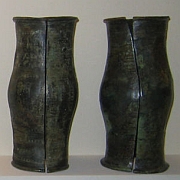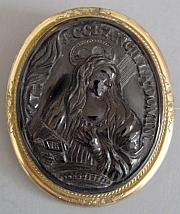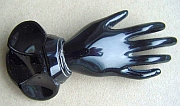...when Jet in rising clouds consumes, Description Jet is a velvety soft, light weight, brownish to coal black gemstone that can take a beautiful high polish. Like coral and pearls, jet is made of organic material. Made of the fossilized wood of the monkey puzzle tree (Araucariaceae), jet was formed more than 135 million years ago. Jet is found in two forms: hard and soft. Basically, hard jet was formed in saltwater, and soft jet was formed is fresh water. Jet may also be referred to as black amber, and, just like amber, jet may produce a mild electric charge when rubbed. History Iron Age Jet While in parts of Germany and Northern Europe, jet was used to make jewelry and artifacts that date back to about 10,000 BC, the oldest jet jewelry ever found was in Asturias Spain, and dated to about 17,000 BC. Early Native American Jet An early Native American culture called Anasazi made decorative amulets out of jet, turquoise, shell, bone and other natural materials. A particularly well-known amulet is a frog made of jet, inlaid with turquoise eyes. The Anasazi culture was a sophisticated Native Ameircan Pueblo culture that existed from about 900 to 1200 AD. Extensive Anasazi archaeological sites are located in an area called Chaco Canyon near the four corners region of New Mexico. Medieval Jet In Medieval Europe, jet was known as "black amber," and like amber, rosaries were often made of jet. Victorian Jet During the late 19th century Queen Victoria popularized the wearing of jet mourning jewelry after her mother and Prince Consort died in the same year. In March of 1861, Queen Victoria's mother died, and nine months later her Prince Consort, Prince Albert, died of typhoid fever. Devastated, Victoria entered a state of mourning for the rest of her life. As a result of the Queen's sombre mourning dress, black clothing and jewelry, including jet jewlery, became extremely popular. 1920s Jet Symbolism Angel: Hanael Planet: Saturn Zodiac: Capricorn US States: See Also |
|




